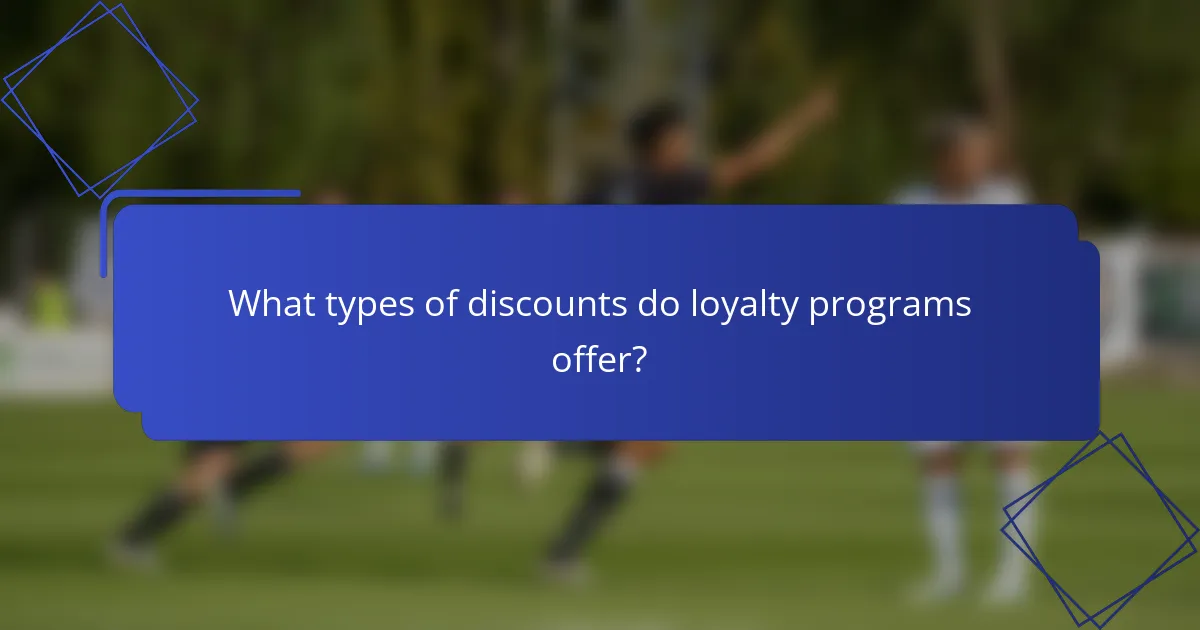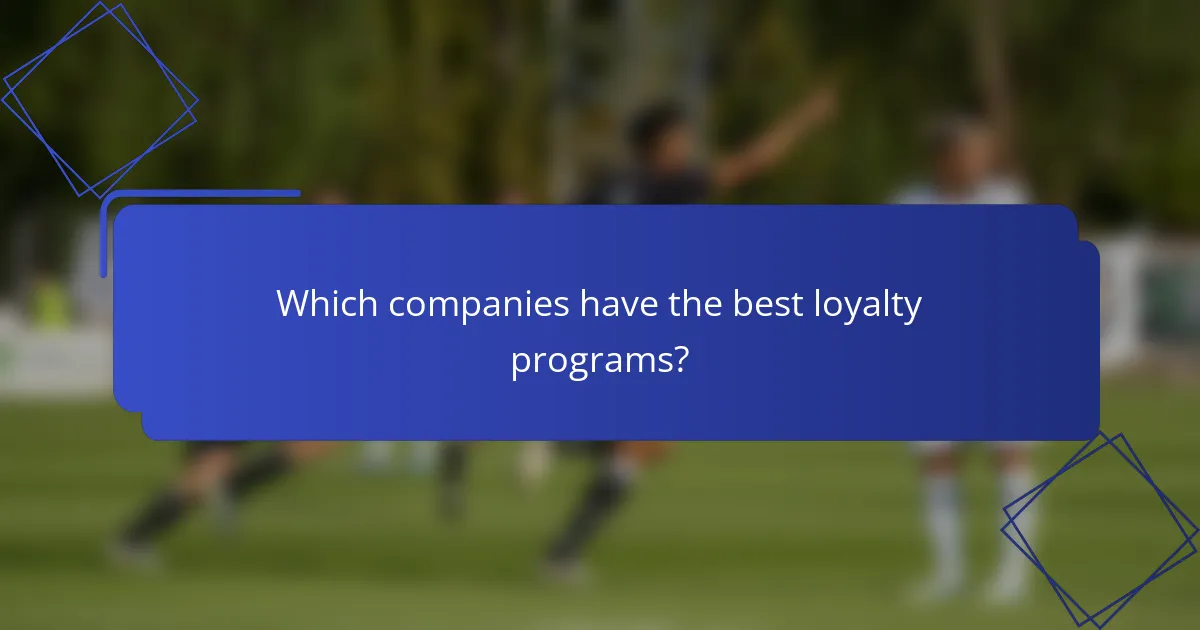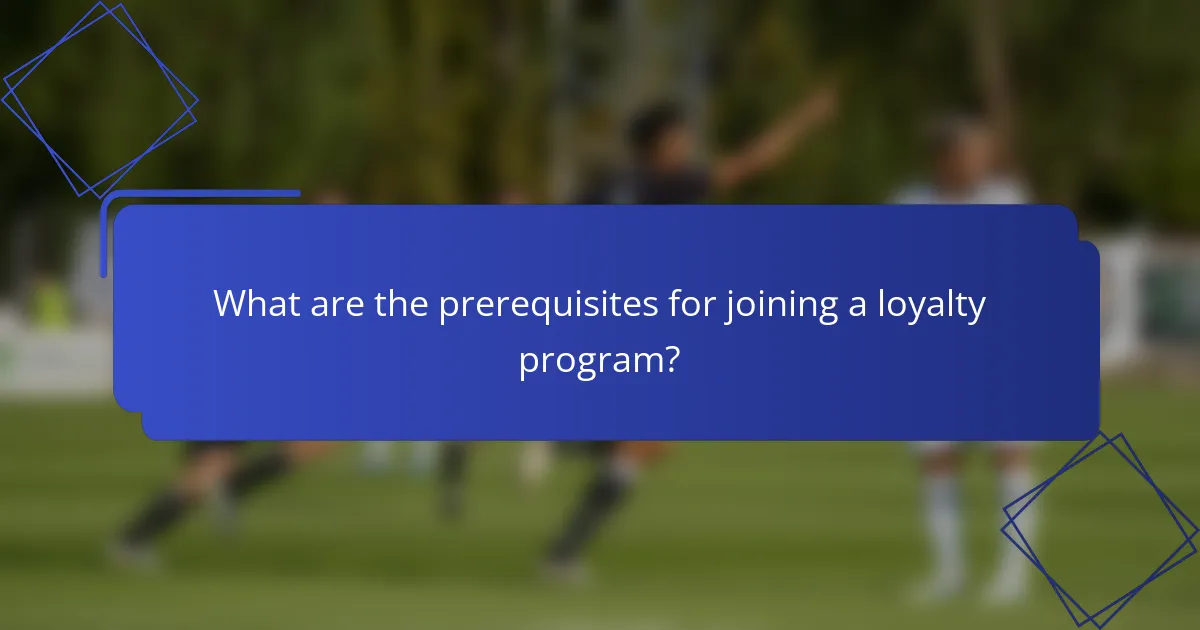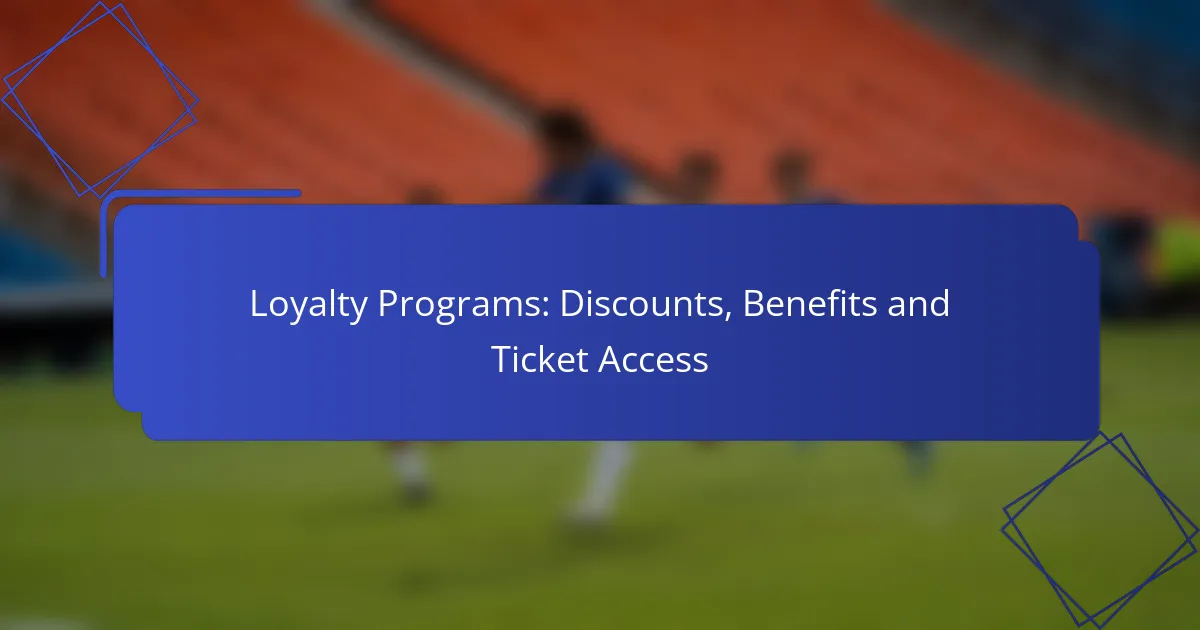Loyalty programs are designed to reward customers for their continued patronage, offering a range of benefits such as exclusive discounts, early access to tickets, and personalized rewards. By utilizing a point-based system, these programs encourage repeat business and foster brand loyalty, providing members with tangible value that enhances their overall shopping experience.

What are the benefits of loyalty programs in the US?
Loyalty programs in the US offer various advantages, including exclusive discounts, early ticket access, personalized rewards, and an enhanced customer experience. These benefits encourage customer retention and increase brand loyalty by providing tangible value to members.
Exclusive discounts
Exclusive discounts are a primary benefit of loyalty programs, allowing members to save money on purchases. These discounts can range from a percentage off the total price to special promotional offers available only to loyal customers.
For example, a retail store might offer a 20% discount on select items for loyalty members, while restaurants may provide a buy-one-get-one-free deal. It’s essential to regularly check the terms of these discounts, as they can change based on promotions or membership tiers.
Early ticket access
Many loyalty programs grant members early access to tickets for events, concerts, or travel bookings. This benefit allows loyal customers to secure their spots before the general public, often leading to better seating options or lower prices.
For instance, a concert venue may allow loyalty members to purchase tickets 48 hours before they go on sale to the public. To take advantage of this, members should stay informed about upcoming events and ensure their membership is active.
Personalized rewards
Personalized rewards are tailored benefits that cater to individual customer preferences and purchasing habits. These can include customized offers, birthday discounts, or rewards based on past purchases.
For example, a coffee shop might offer a free drink on a member’s birthday or provide discounts on frequently purchased items. Members should engage with the program by updating their preferences to maximize these personalized rewards.
Enhanced customer experience
Loyalty programs often enhance the overall customer experience by providing members with exclusive services and support. This can include priority customer service, access to special events, or invitations to member-only gatherings.
For instance, a hotel loyalty program may offer members complimentary room upgrades or late check-out options. To fully benefit from these enhancements, customers should actively participate in the program and take advantage of the services offered.

How do loyalty programs work?
Loyalty programs reward customers for their repeat business by offering various benefits, discounts, and exclusive access. These programs typically operate on a point-based system, where customers earn points for purchases that can be redeemed for rewards.
Point accumulation systems
Point accumulation systems are the backbone of most loyalty programs. Customers earn points based on their spending, often receiving a certain number of points per dollar spent. For example, a program might offer 1 point for every $1 spent, with bonus points available during promotions or for specific products.
Some programs may have expiration dates for points, encouraging customers to redeem them within a certain timeframe. It’s essential to understand the terms of point accumulation to maximize rewards and avoid losing points due to inactivity.
Tiers and levels of membership
Tiers and levels of membership categorize customers based on their spending or engagement. Many loyalty programs feature multiple tiers, such as Silver, Gold, and Platinum, with each level offering increasing benefits. Higher tiers often provide perks like exclusive discounts, early access to sales, or enhanced point earning rates.
Advancing to a higher tier typically requires meeting specific spending thresholds within a defined period, such as annually. Customers should be aware of these requirements to strategize their spending effectively and enjoy the maximum benefits available.
Redemption options
Redemption options vary widely among loyalty programs, allowing customers to use their accumulated points in different ways. Common options include discounts on future purchases, free products, or access to exclusive events. Some programs may also allow points to be redeemed for travel rewards or gift cards.
It’s crucial to compare the value of redemption options, as some may offer better value than others. For instance, redeeming points for merchandise might provide less value compared to using them for travel or experiences. Customers should regularly review their program’s offerings to make informed decisions about how to use their points effectively.

What types of discounts do loyalty programs offer?
Loyalty programs typically provide various discounts that enhance customer retention and reward frequent shoppers. These discounts can include percentage reductions on purchases, cashback rewards, and special seasonal promotions tailored to engage members.
Percentage off purchases
Percentage discounts are a common feature of loyalty programs, allowing members to save a specific percentage on their total purchases. For instance, a program might offer 10-20% off on select items or during promotional periods. These discounts can significantly lower the overall cost, making it an attractive incentive for repeat customers.
When considering percentage discounts, check for any minimum purchase requirements or exclusions on certain products. Understanding these terms can help maximize savings and avoid unexpected costs.
Cashback rewards
Cashback rewards provide a percentage of the purchase amount back to the customer, typically credited to their account or issued as a statement credit. Many programs offer cashback rates ranging from 1-5%, depending on the type of purchase or promotional events. This system encourages members to spend more to earn additional rewards.
To make the most of cashback rewards, track your spending and understand how the program calculates rewards. Some programs may have caps on earnings or expiration dates for cashback, so staying informed can enhance your benefits.
Seasonal promotions
Seasonal promotions in loyalty programs often coincide with holidays or special events, providing exclusive discounts or bonus rewards during these times. For example, a retailer might offer double points or a higher percentage off during Black Friday or Christmas sales. These limited-time offers can be an excellent opportunity to save more.
To take advantage of seasonal promotions, subscribe to newsletters or follow brands on social media to stay updated on upcoming deals. Planning purchases around these promotions can lead to substantial savings and increased rewards accumulation.

Which companies have the best loyalty programs?
Several companies stand out for their exceptional loyalty programs, offering significant discounts, benefits, and exclusive access to tickets. Notable examples include Starbucks, Amazon, and Marriott, each providing unique rewards that cater to different consumer needs.
Starbucks Rewards
Starbucks Rewards allows customers to earn stars for every purchase, which can be redeemed for free drinks and food items. Members also receive personalized offers and can enjoy free refills on brewed coffee and tea while in-store.
To maximize benefits, consider using the Starbucks app for mobile ordering, which not only saves time but also earns you stars faster. Regular promotions may offer bonus stars, so keep an eye on seasonal campaigns to boost your rewards.
Amazon Prime
Amazon Prime is a subscription-based loyalty program that provides numerous benefits, including free shipping, exclusive deals, and access to streaming services. Members can enjoy discounts on select products and early access to lightning deals.
When evaluating whether to join, consider your shopping habits. If you frequently order from Amazon, the annual fee can quickly pay for itself through savings on shipping and exclusive offers. Additionally, take advantage of Prime Day for significant discounts across various categories.
Marriott Bonvoy
Marriott Bonvoy is a loyalty program that rewards members for staying at Marriott hotels, offering points that can be redeemed for free nights, upgrades, and experiences. Members also gain access to exclusive rates and benefits like late checkout and complimentary breakfast at select properties.
To enhance your experience, consider signing up for the program before booking your stay. Look out for promotions that offer bonus points for specific stays or events, and remember that points can often be transferred to airline miles, providing even more value for frequent travelers.

What are the prerequisites for joining a loyalty program?
Joining a loyalty program typically requires meeting certain criteria, which can vary by program. Common prerequisites include age, potential membership fees, and geographic location.
Age requirements
Many loyalty programs impose age restrictions, often requiring members to be at least 18 years old. This is particularly common in programs associated with alcohol or gambling industries, where legal age limits apply.
Some programs may allow minors to join with parental consent, but this varies widely. Always check the specific age requirements of the program you are interested in.
Membership fees
While many loyalty programs are free to join, some may charge an initial membership fee or an annual subscription. Fees can range from a few dollars to several hundred, depending on the benefits offered.
Consider whether the benefits justify any costs. For instance, a program that offers significant discounts or exclusive access may be worth the investment, while a free program might still provide valuable perks.
Geographic restrictions
Geographic restrictions can limit who can join a loyalty program. Some programs are only available in specific countries or regions, which can affect access to benefits and rewards.
Before signing up, verify if the program is available in your location. This is especially important for international brands that may have different offerings based on the market.



